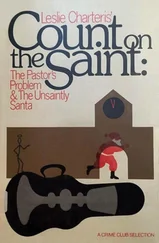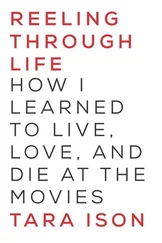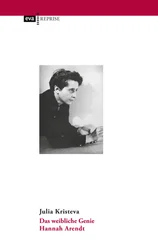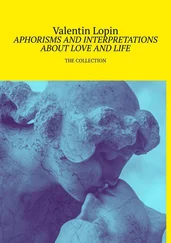“As you know, oh dearest, male mystical subjects perceive themselves as feminine. Look at Saint Bernard, who starts lactating beneath the loving rays of God. Whereas female mystics become masculinized, like Hildegarde of Bingen, Elisabeth von Schönau, Teresa of Avila herself…well, to a degree, correct me if I’m wrong…This psychic bisexuality, avowed and paraded, appears to me instead as a clear-eyed acceptance, also a traversing, of the common instability of the hysteric, always wondering which sex she belongs to. More than a common or garden hysteria, I’d say this is a hysteria mounted on a psychosis — mounted as befits these Amazons for God! — and prompting the outbreak of body symptoms like stigmata, convulsions, hallucinations, levitations, comas, and ‘resurrections.’”
My colleague’s admiration for the intrepid horsewomen is plain, as is his appreciation of their rare “hysterical” panache. Aude Tristan must be an ace at such defenses and illustrations of bisexuality! She must stalk him into every last recess of virility. I raise the stakes.
“Some practitioners manage to slow down their heartbeats and respiration, like in the heart prayer of the Orthodox Church, and even more clearly in yogic meditations. Subjects who have a long history of meditation can lower their metabolic rate, you know, carbon dioxide and oxygen, and alter an EEG reading of alpha rhythms — nine to seventeen cycles per second — to theta rhythms, six to seven cycles per second.” It’s my turn to impress him, with a flourish of very recently acquired knowledge.
“Without reducing mysticism to pathology — let’s be more nuanced, shall we? — you know as well as I do that the ‘unifying’ impulse of the mystic toward the Object, an effect that feels ‘obvious’ or like a ‘revelation’ to him or her, is also present in psychosis.” (Nothing doing. My scientific tidbits have only encouraged him to labor his point.) “And every self-respecting psychiatrist knows that this feeling of ‘union’ marks the symptomatic moment that in schizophrenics can herald either a cure or — should the feeling repeat itself — an aggravation of psychosis. In the same way, these modified perceptions, searing instants of an ‘altered’ consciousness of mystical experience, remind us of temporal seizures in epileptics. Allow me, however, to contradict you: neurological ‘diagnoses’ of pathogeny are of limited usefulness, because such states can only become mystical on condition of a background theological culture, or at the very least a mythological infrastructure, to lend them meaning over and above the pathological. I remain the analyst, you understand. And only on that condition can marginality — fruitful or destructive — become culturally transmissible, and museums, libraries, or churches start replacing hospitals. Do you see what I mean?”
“You’re right. The arts do seem to belong with those experiences, pathology included. Perhaps the only ones of their kind to survive in the modern world, however shakily, I agree. There’s no doubt about music and poetry, at least…What are they but sublimated transpositions of orgasmic sex, mutual penetrations of the artist’s universe and the world of the senses, encouraging further interpenetrations with the audience? Al-Hallaj said the same thing: ‘The eye with which you see me is the eye with which I see you.’”
I can tell Jérôme suspects me of overestimating the positive role of sublimation in these “extreme” cases. Aren’t I also being slightly hasty with countertransference?
“If you ask me, oh dearest, in our culture it’s the Song of Songs that provides the secret dramaturgy of great aesthetic adventures and mystical raptures. That said, merely to acknowledge the amorous dynamic that underlies artistic achievement explains nothing about how a particular individual actually got there! That remains an unknown, you see. A gap that scientific reason may never succeed in filling, no matter whether we’re talking about Mozart’s music or the very different but no less mysterious works of your Teresa. Ah, the unknown! Therein resides the tremendous pull we feel toward artists and mystics…” Phew, my colleague hasn’t taken against me. He drifts, almost humbly, into reverie.

To announce a method is to announce its limits. Tristan is happy to leave it at that, but I’m not. His generalizations about the mystic continent are so unsatisfactory that I’ve no choice but to gird myself for the patient auscultation of a text, a body. I don’t insist, there’d be no point. My colleague has just admitted that psychoanalysis, albeit more enlightening than other commentaries on the amorous logic of “God’s lunatics,” is a long way from flushing out its secrets. It edges nearer to them, though. Getting warmer, burning! Is not the unconscious a dynamic that breaches classical rationality and operates through the contradictory or “apophatic” logics with which mystical experience is studded? Or am I going too far, too fast?
First Bruno, now Jérôme. “You’re a man-eater,” snarled my ex before he disappeared. Not really. An eater of ideas, more like. I listen, read, absorb, appropriate, I tend my patch. There’s no denying I enjoy it. But I don’t steal, I steal away, at my own risk. Both faithful and unfaithful, and rather the latter. I linger in the company of the charming, the knowledgeable Jérôme Tristan during Parisian Psychoanalytical Society meetings and other after-dinner events. We are always the last to leave, sometime after midnight. He reassures me that I’m not the only one who thinks psychoanalysis could be poised, today, to recapture Freud’s audacity, the daring of his take on Moses, on monotheism, on civilization and its discontents…
“Thanks, but I really don’t need a lift, place d’Italie is very close and I feel like a walk.”
I pick up the morning papers at the kiosk in boulevard Saint-Michel, the moon is full, thin mist blurs the bare horse chestnuts of the Luxembourg gardens and wets my face. I veer toward Les Gobelins, different neighborhood, different style, different world, Paris is an always possible journey. No, I won’t follow the trail blazed by my colleague, I shall travel in my own way. A more personal way? Not only that, as we will see.

Freud knew how indebted he was to German philosophy and psychiatry, to Hartmann and Goethe, as much as to his hysterical female patients. Duchamp’s Bride Stripped Bare by Her Bachelors, Even . 3Wasn’t Freud the Dadaist of lovesickness? The analytical process that “perlaborates,” as he put it, the symptoms generated by the accidents of erotic and thanatic attachments, resembles the mystic “path”—or so said some caustic black book or other. It does? Only if you ignore the want of any transcendental consolation, as well as the elucidation of the sexual motive, both of which are pretty major differences. The analytic “path” remains amorous, that is, transferential. It involves silence and the verbalization of desire, certainly, but it does not “lead anywhere.” Except to the dissolution of the transferential bond itself, of that loving bond at last stripped bare, and to an understanding of the immemorial traditions of totem, taboo, and other disturbing oddities of a more or less devilish nature. Quite extraordinary, surely? Certain mystics got there too, in their fashion, when they confessed to being “free of God,” breaking with the religious community, or when they exposed themselves to Nothingness in all serenity.
And yet, if like David Bakan I can detect resonances between Freud’s discovery of the unconscious and Jewish mysticism, the founder of psychoanalysis refers more often to Judaism than to its mystical currents. 4In his rare allusions to mysticism at large, Freud is worse than suspicious: he is impervious. While identifying similarities between the logic of dreams and that of mystical discourse, he makes this abrupt confession to Romain Rolland: “To me mysticism is just as closed a book as music.” 5And at the very beginning of the twentieth century he writes to his friend Wilhelm Fliess, 6about Dionysiac lyricism in Nietzsche, “in whom I hope to find words for much that remains mute in me.” 7
Читать дальше













